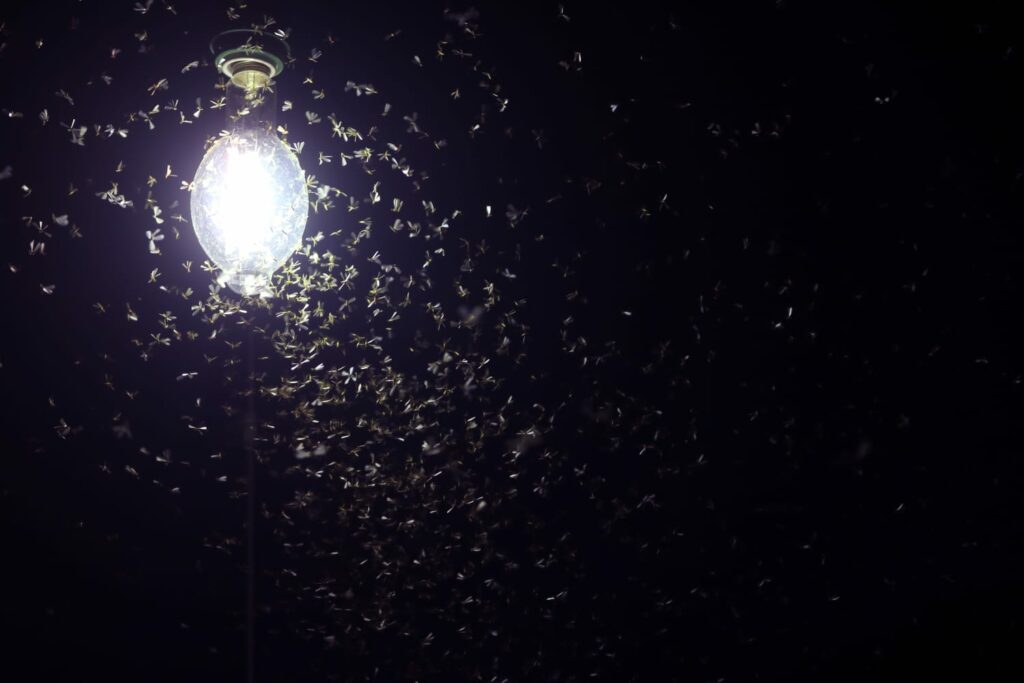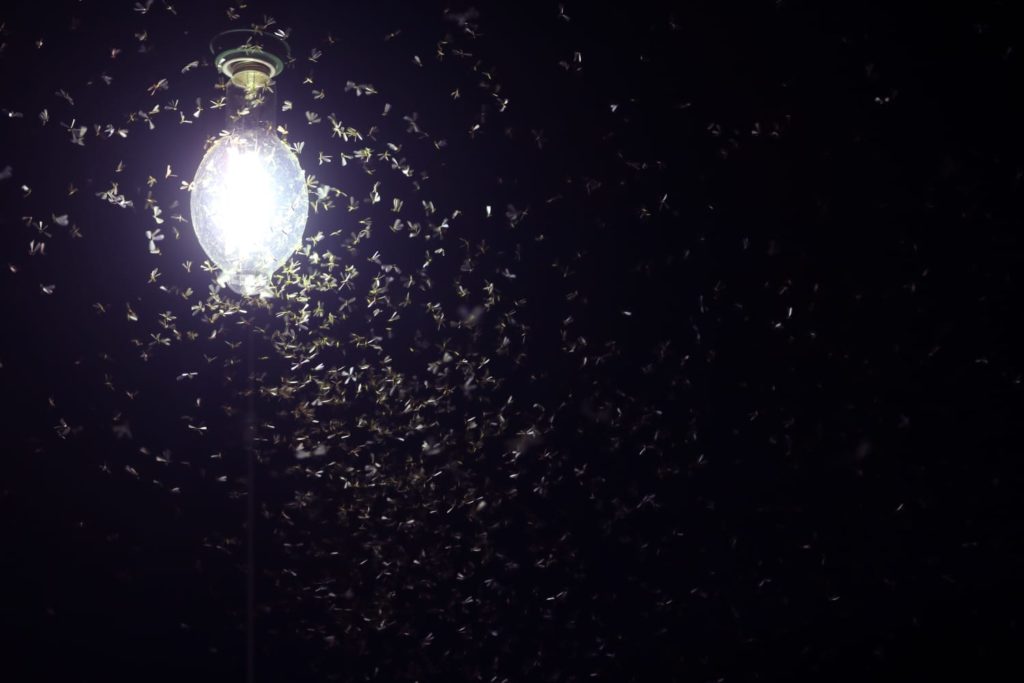
Contents

Porch lights help us navigate through our yard when it gets dark, but no good deed goes unpunished. As soon as the light clicks on, you could be swarmed with dozens of insects attracted to light. Worse still are the lights you have on inside your home, and even a quick entry through the doorway can attract these pests inside.
So you wonder, what makes these insects so attracted to the light? Well, scientists have described this phenomenon as phototaxis. Animals or insects can be phototactic, meaning they instinctively are affected by the light, either by wanting to be closer to it or further away from it. Those pests that swarm around your porch light are considered positively phototactic, whereas the ones that flee, such as cockroaches, are negatively phototactic.
Certain insects are drawn to the light, but more so are the nocturnal insects. However, some bugs will be attracted to light at certain stages of their lives. For instance, the housefly larva reacts negatively toward daylight and will run away. But the adult housefly will be attracted to the light.
Water insects are also attracted to light, but only if it is near to the water. Interestingly, when a light source is placed underwater or near the water’s surface, water beetles, mosquito larvae, and dragonflies will move toward the light.
Some insects may not care so much for the light itself, but the specific wavelength of light. Butterflies use color to help search for food. They can distinguish such color wavelengths like yellow, red and blue from green. The butterflies will fly up to the tops of flowers, but will lay eggs only on green surfaces.
Light will affect insects differently, too. Unnatural light can confuse many insects, especially the moth. Think about it, during the summer you may notice a moth wandering back and forth from the light, into the dark, and then back to the light. Like humans, moth eyes need time to adjust from the light to the dark, but it takes moths much longer for the transition. It could take up to a half hour for the adjustment, so as the moth flies from the light, it cannot see predators or other dangers, so it returns to the light.
Some homeowners use lights to their advantage in trying to eliminate insects. Bug zappers, or insect lamps, lure mosquitoes and flies with ultraviolet radiation. When they reach the lamp, they are then struck with an electric shock, killing them and dropping them into a tray. The current is strong enough to kill the insects, but not strong enough that it would harm the environment, humans or pets.
There is still a fair amount of debate between scientists as to why exactly insects are attracted to light, but whatever the reason may be, we will still find it annoying when insects fly into our home and buzz around the living room lamp. For more information on insects and their natural attraction to light, and how to keep them out of your home, call Van Den Berge Pest Control today at 616-392-7367.
Trust the locally owned, widely renowned experts at Van Den Berge Pest Control for all of your pest needs. With over 100 years of combined experience throughout the Holland, MI-based pest control team, you know you’re in excellent hands with our state-certified experts.
Recent Posts
Why Trust Our Termite Inspection and Treatment?
Rely on our termite inspection and treatment because our team of experts is certified and
Six Effective Chemical Pest Prevention Methods
They say that prevention is better than cure, and this adage holds true when it
What Is the Best Termite Inspection and Treatment?
For the best termite inspection and treatment, opt for professional services. Experts spot early signs,
